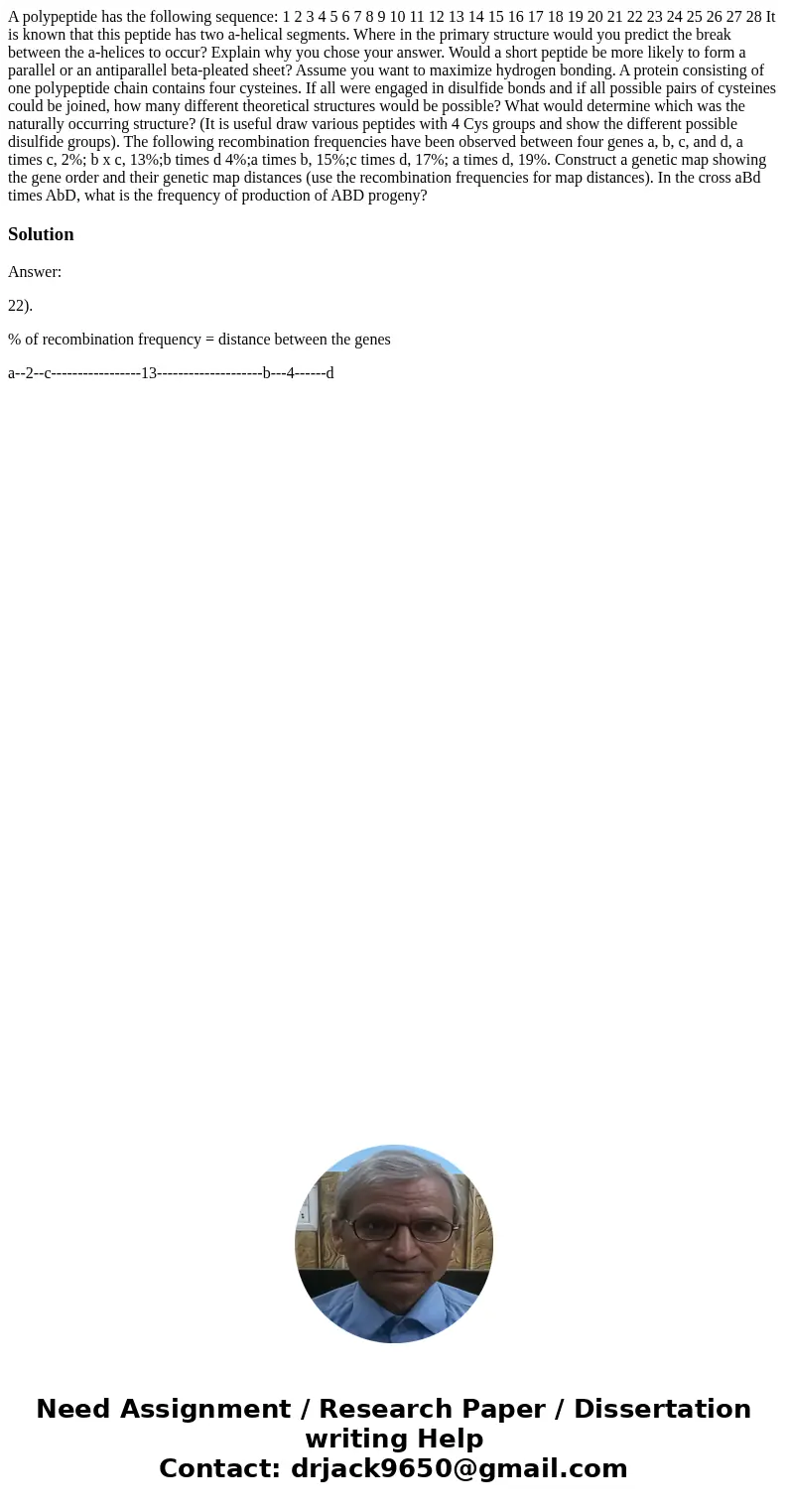A polypeptide has the following sequence 1 2 3 4 5 6 7 8 9 1
A polypeptide has the following sequence: 1 2 3 4 5 6 7 8 9 10 11 12 13 14 15 16 17 18 19 20 21 22 23 24 25 26 27 28 It is known that this peptide has two a-helical segments. Where in the primary structure would you predict the break between the a-helices to occur? Explain why you chose your answer. Would a short peptide be more likely to form a parallel or an antiparallel beta-pleated sheet? Assume you want to maximize hydrogen bonding. A protein consisting of one polypeptide chain contains four cysteines. If all were engaged in disulfide bonds and if all possible pairs of cysteines could be joined, how many different theoretical structures would be possible? What would determine which was the naturally occurring structure? (It is useful draw various peptides with 4 Cys groups and show the different possible disulfide groups). The following recombination frequencies have been observed between four genes a, b, c, and d, a times c, 2%; b x c, 13%;b times d 4%;a times b, 15%;c times d, 17%; a times d, 19%. Construct a genetic map showing the gene order and their genetic map distances (use the recombination frequencies for map distances). In the cross aBd times AbD, what is the frequency of production of ABD progeny?
Solution
Answer:
22).
% of recombination frequency = distance between the genes
a--2--c-----------------13--------------------b---4------d

 Homework Sourse
Homework Sourse